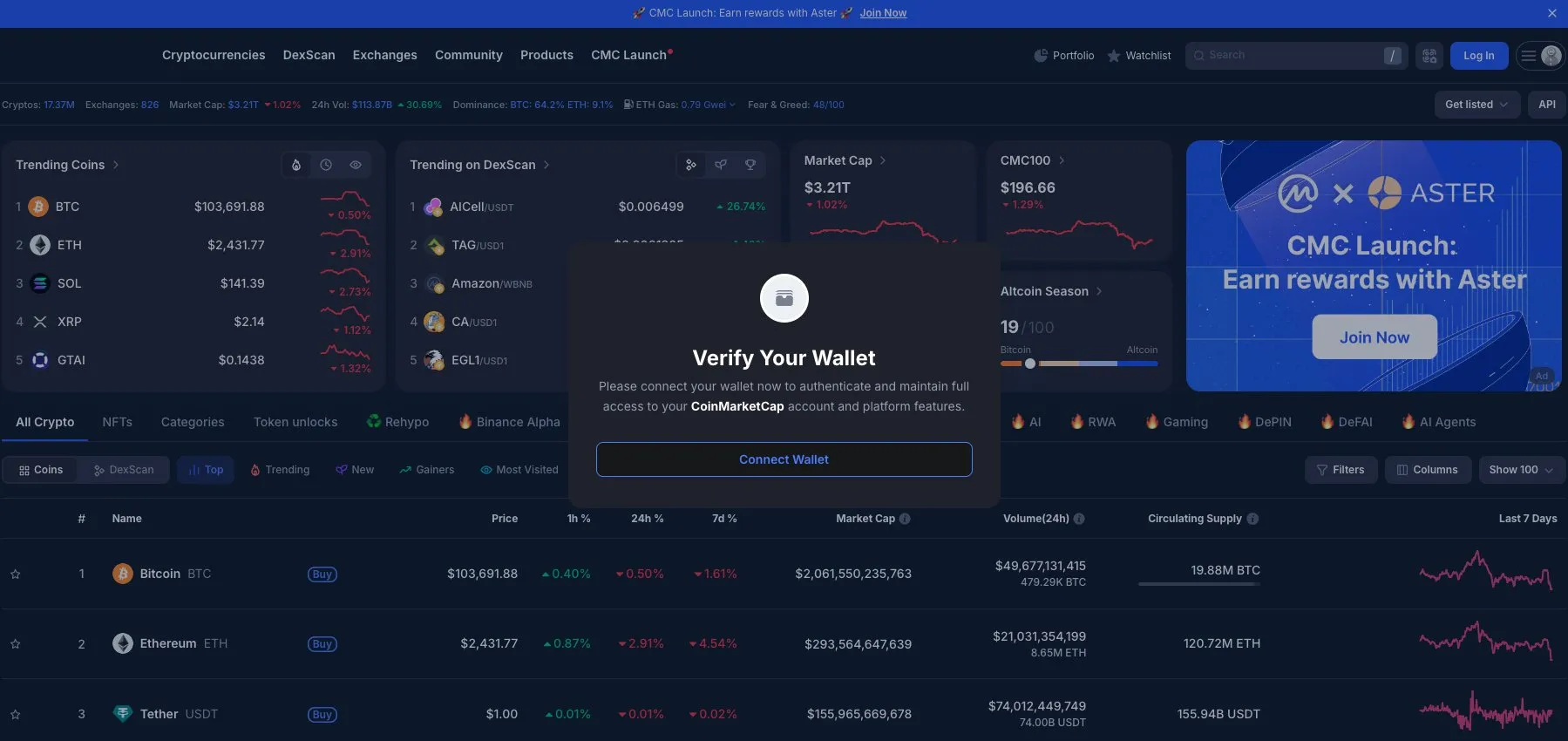-
CoinMarketCap faced a brief but impactful security breach on June 20, exposing users to a fraudulent wallet verification pop-up that threatened crypto wallet safety.
-
The incident was traced back to malicious JavaScript embedded via a doodle image on the platform’s homepage, highlighting vulnerabilities in third-party content integrations.
-
COINOTAG sources emphasize the importance of user vigilance, with CoinMarketCap urging users not to connect wallets during the breach and reassuring that no losses occurred.
CoinMarketCap’s June 20 security breach exposed users to fake wallet verification pop-ups via malicious JavaScript, underscoring crypto platform vulnerabilities and user caution.
CoinMarketCap’s Security Breach Linked to Malicious Homepage Doodle
On June 20, 2025, CoinMarketCap experienced a security incident that briefly compromised its homepage interface by displaying a deceptive pop-up prompting users to verify their crypto wallets. This pop-up, which mimicked legitimate site functionality, was the result of malicious JavaScript code injected through a seemingly innocuous doodle image embedded on the homepage. The data aggregator swiftly alerted users, warning them not to connect their wallets to the suspicious prompt.
Root Cause Analysis: Third-Party Service Compromise
Investigations revealed that the malicious code originated from a compromised third-party service, likely an ad network, which injected unauthorized scripts into CoinMarketCap’s content delivery system. The breach was not due to internal infrastructure vulnerabilities but rather external dependencies used to serve dynamic content. CoinMarketCap promptly removed all affected scripts and implemented enhanced security measures to prevent recurrence.

Implications for Crypto Platform Security and User Vigilance
This incident underscores the persistent security challenges faced by major crypto platforms, even those with robust infrastructures like CoinMarketCap, which is owned by Binance. It serves as a critical reminder that third-party integrations can introduce vulnerabilities, necessitating continuous monitoring and rapid response protocols. Security experts recommend that users remain cautious by regularly reviewing wallet activity and avoiding connections to unknown decentralized applications or suspicious prompts.
Industry-Wide Impact and Ongoing Threat Landscape
Throughout 2025, the crypto sector has witnessed a surge in sophisticated attacks targeting platform vulnerabilities, resulting in over $2 billion in stolen assets. Notably, a $1.4 billion exploit on Bybit exemplifies the scale and complexity of these threats. CoinMarketCap’s swift handling of its breach highlights the importance of transparency and proactive security measures in maintaining user trust and platform integrity.
Conclusion
CoinMarketCap’s recent security breach, caused by malicious code embedded via a third-party doodle image, highlights the evolving risks in the crypto ecosystem. While no user losses were reported, the event reinforces the necessity for both platforms and users to adopt stringent security practices. Continuous vigilance, rapid incident response, and transparent communication remain essential to safeguarding digital assets in an increasingly hostile environment.